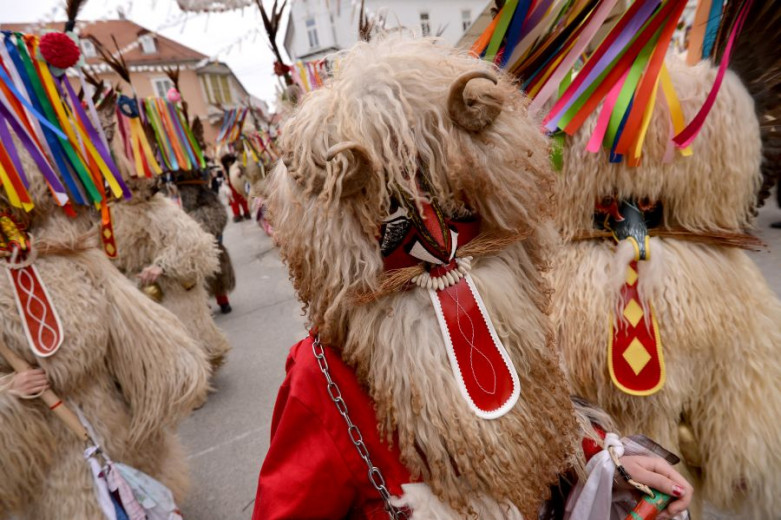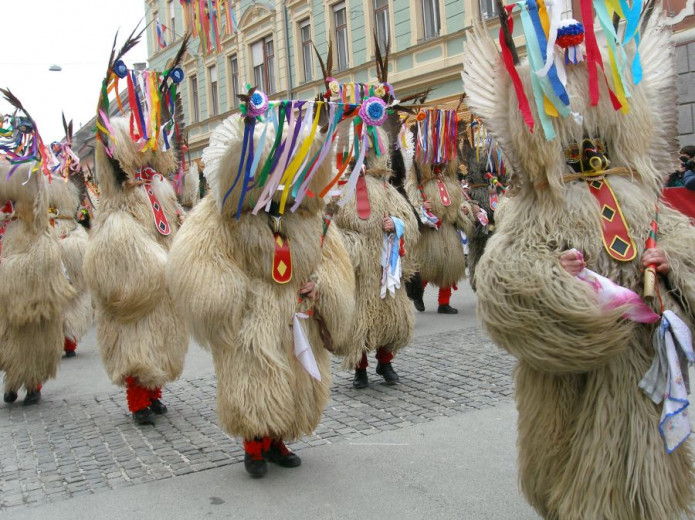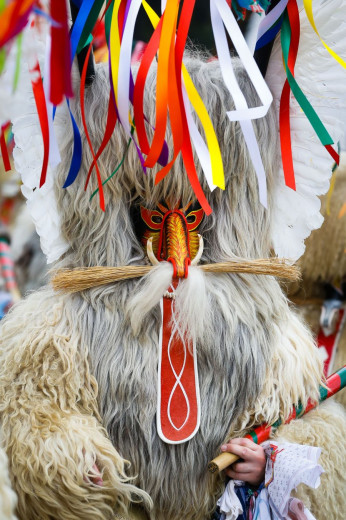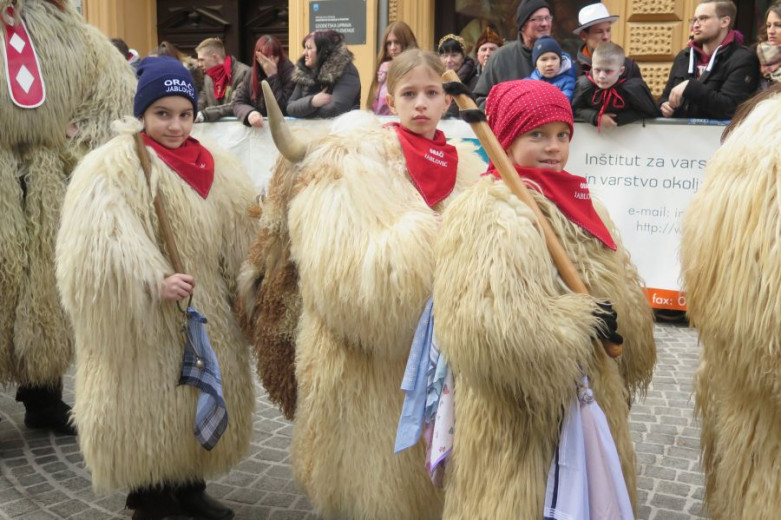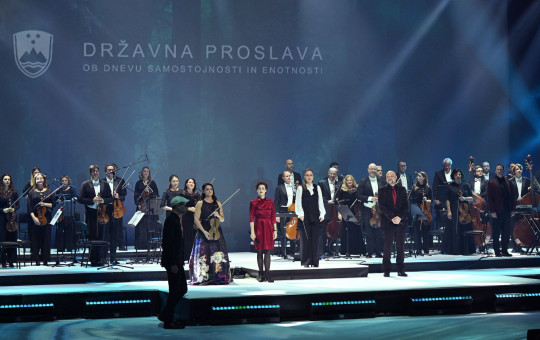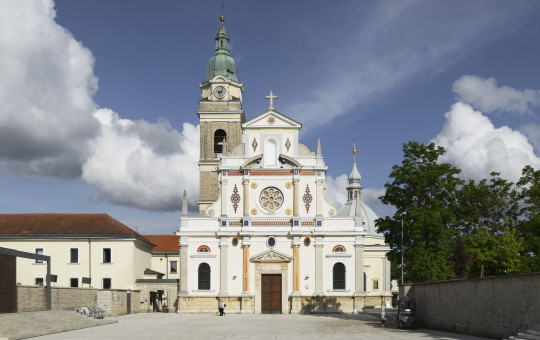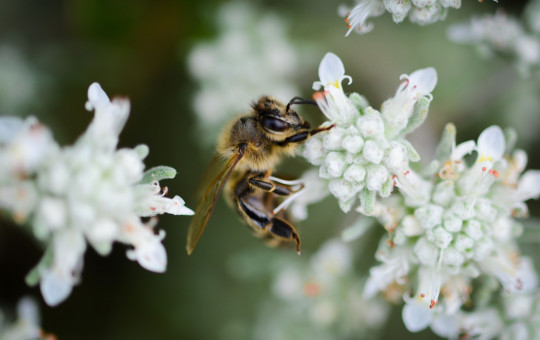Date: 14. October 2019
Time to read: 3 min
The wandering kurent figures rank among the more visible traditional Shrovetide Carnival customs in Slovenia, and the kurent is the most recognisable Carnival character, with records of his appearance dating back to 1880. The kurent is also one of the symbols of the Slovenian identity.
The entry of the kurent tradition on the UNESCO list of Intangible Cultural Heritage marks an exceptional recognition for Slovenia, and especially for all those who work to preserve this unique tradition.
There is no doubt that the kurent, or korant, an original and unique Carnival character from Ptuj, Dravsko Polje and the surrounding area, is an important tradition in Slovenia. A unique tribute to this custom are the traditional Kurentovanje celebrations in Ptuj.
The effort put into the kurent character involves a cultural process that helps build genuine interpersonal relations, which are so important in our everyday life and work.
With the loud shaking of their bells the kurents drive away winter and evil from the land, and invite in spring and a good year. Aleš Ivančič, president of the Kurent Ethnographic Society of Ptuj, explains that young bachelors have honoured this ancient fertility rite since time immemorial, and thus was created the story of the living myth, the kurent. At one time they also honoured deceased relatives, and reverence was offered to the spirits. This fairy-tale hero, who is linked symbolically to grapevines, is also known as a god of merriment and wine in Slavic mythology. He is an ethnographic character that can only appear in the time of the year from Candlemas to Ash Wednesday.
Fearful Carnival figure
The kurent, who resembles a demon, is clothed in sheepskin, and around his belt hang large cowbells and beautifully embroidered handkerchiefs. He wears a mask on his head and gaiters on his legs. Kurents collect their handkerchiefs from girls, and those with more handkerchiefs on their belts enjoy greater prestige.
Traditionally the young kurent lads would also get their colourful wool socks from their girlfriends. The kurent’s headgear is made of tanned or sometimes even dyed leather, with openings for the eyes, nose and mouth. Over time people also started adorning their headgear with feathers from domestic fowl, mainly turkeys or geese, and in the past some kurents even used crow feathers. The eyes and mouth are ringed in red, while the nose is shaped as a leather snout. White beans, representing teeth, are attached to the mouth by a thread. Under the nose are two sprigs of dry garden mint in the place of a moustache, while a long red finely embroidered tongue dangles from the kurent’s mouth. Jutting from the headpiece are two cow horns or two thin sticks adorned with bunches of feathers tied together and interwoven with ribbons of coloured paper. A kurent’s fearful appearance is further enhanced by his club, which is sheathed in hedgehog skin.
Little and big kurents
At one time the kurents were just young, unmarried men, but nowadays women and children also dress up as kurents. Ivančič of the Kurent Ethnographic Society explains that the ritual changed into a mass "veneration of the Carnival time," and the development of the costume gave rise to a period of mass participation, with kurent societies springing up at the beginning of the 20th century. Greater participation led to a break with the traditional rule that only bachelors could wear the costume, and today you can encounter people of all ages and genders in kurent gear. "The children are what drives us," notes Ivančič, "the society is principally intended for them. We want to make it possible for them to recognise the character and ritual as part of the Slovenian cultural identity, and to present it with pride around the world."
The mysterious kurent
Ivančič recalls that one of the many stories about kurents say that one of them tied Death to a tree with thread, and that during that time no one died. Another says that he was a handsome young man whom women simply adored and would not leave in peace. He took off to a desert and there asked God to give him an ugly face. God heard him and he grew horns. He returned home and the women left him in peace. However, in memory of the once beautiful young man, women started celebrating Shrove Tuesday with riotous merry-making.
The kurent figure has a hint of the mysterious, and the sensations when you dress up as one and give yourself up to the Carnival festivities are quite special.
"The costume gives you power and energy, so you can drive away the bad and bring in the good," explains the president of the Kurent Ethnographic Society. "I could even say that for a moment I know what the gods felt like! You simply can’t describe the experience in words."

